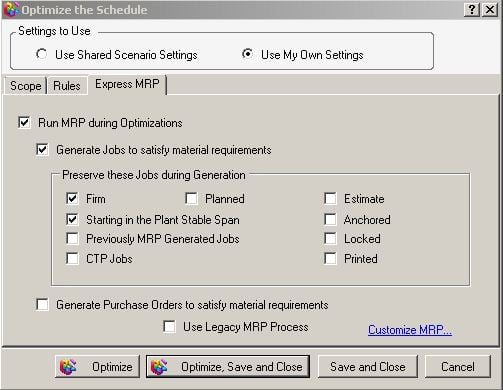Within manufacturing, developing a plan for your resources is absolutely vital for your operation. Without proper resource planning for your manufacturing operation, you will have a much more challenging time managing various areas within your supply chain such as inventory, production, and output.
This is why utilization of materials requirements planning (MRP) can efficiently manage materials within production, making it much easier for project managers to order and organize materials waiting to be assembled. Through MRP, the need for materials planning is eliminated and the system is able to successfully carry out an efficient strategy. MRP has become a vital component in allowing manufacturers to keep up with consistently growing demand.
Three Elements of Materials Requirements Planning (MRP)
Material requirements planning (MRP) systems utilize time sensitive, priority-planning techniques to calculate labor schedules and material requirements for product runs in manufacturing facilities. MRP systems rely mainly on innovative IT to maintain updated information about manufacturing needs, consumer demands, inventory levels, and more. Before implementing materials requirements planning (MRP), it is important to understand the three elements of the system. The three elements of materials requirements planning include the following:
- MRP Information Sources - MRP systems use four key pieces of information to determine what exactly needs to be ordered. These four information sources include production schedules, material specs, production cycle times, and supplier lead times. Production schedules help with describing in detail when each product should be manufactured. This information is then used to adjust production machines and process flows.
- Case Studies - Majority of businesses will conduct research, gather business intelligence and feedback from companies with similar MRP systems in their industry. The best results are always achieved when executives and top management set the necessary conditions and provide the right resources to guide organization actions.
- Problems That are Unavoidable - Management must recognize when there are technical and operation issues that must be addressed through training, support, and information sharing. The production schedule and materials specs will determine what materials should be ordered, so they be should mastered before moving onto further parts down the road.
Advanced Planning and Scheduling Software (APS) can easily aid with materials requirements planning (MRP). APS and MRP are able to be integrated together and can aid production facilities in various areas such as waste elimination, productivity increase, and cost reduction. APS software is a must for manufacturing facilities that are seeking to take their production facility to the next level in terms of optimal efficiency. Quickly turn your manufacturing operation into a gold mine through implementation of APS and MRP.
Advanced Planning and Scheduling Software
Advanced Planning and Scheduling (APS) software has become a must for modern-day manufacturing operations due to customer demand for increased product mix and fast delivery combined with downward cost pressures. APS can be quickly integrated with a ERP/MRP software to fill gaps where these system lack planning and scheduling flexibility and accuracy. Advanced Planning and Scheduling (APS) helps planners save time while providing greater agility in updating ever-changing priorities, production schedules, and inventory plans.
- Create optimized schedules balancing production efficiency and delivery performance
- Maximize output on bottleneck resources to increase revenue
- Synchronize supply with demand to reduce inventories
- Provide company-wide visibility to capacity
- Enable scenario data-driven decision making
Implementation of Advanced Planning and Scheduling (APS) software will take your manufacturing operations to the next level of production efficiency, taking advantage of the operational data you already have in your ERP.
Related Lean Video
APS Resources
Topics: Advanced Planning and Scheduling




















LEAVE A COMMENT